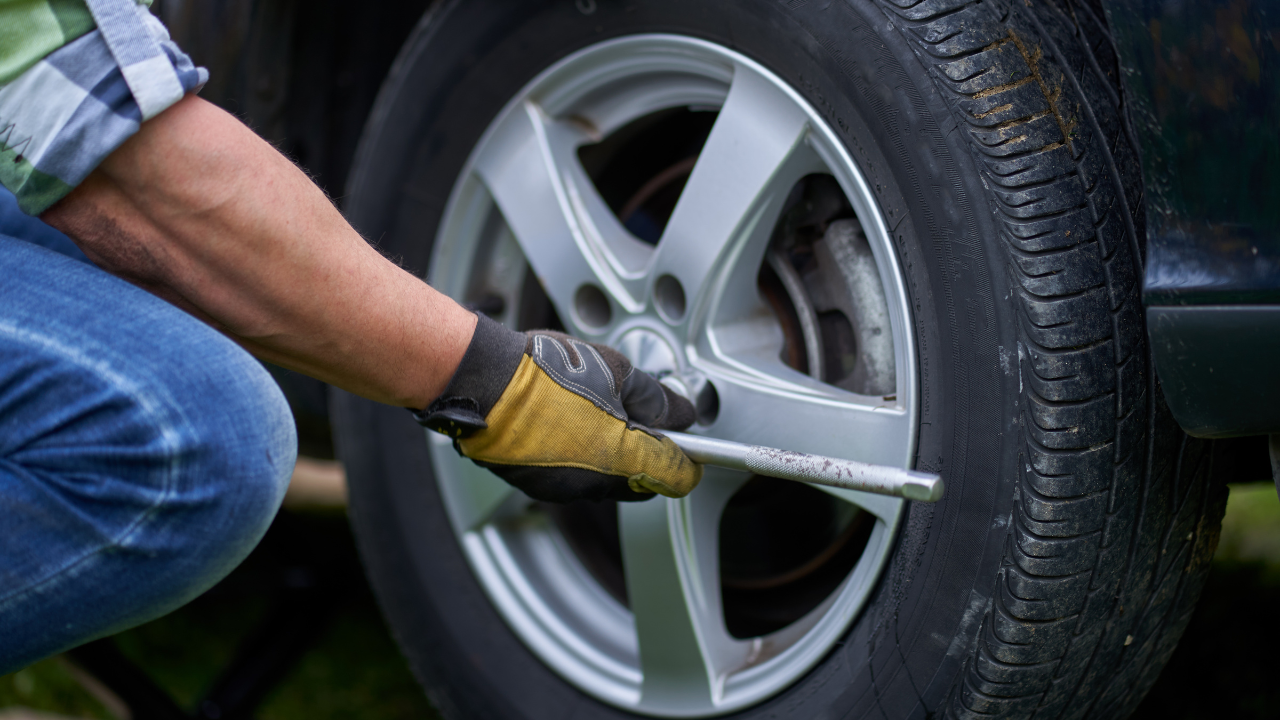Having a flat tire can be a frustrating experience, especially when you’re on the road with no immediate help in sight. However, learning how to fix a flat tire yourself is a valuable skill that can save you time, money, and the hassle of waiting for roadside assistance. In this comprehensive guide, we’ll walk you through the step-by-step process of fixing a flat tire, equipping you with the knowledge and confidence to tackle this common issue. Ready to tackle that flat tire? Remember, you’ve got this! But if you hit a roadblock, Crossroads Helpline is just a call away.
Understanding Your Tire

Before diving into the repair process, it’s essential to understand the basic components of your tire. A tire is made up of several layers, including the outer tread, inner liner, steel belts, and fabric body plies. When a tire goes flat, it’s typically due to a puncture in the tread area. Inspecting your tire to locate the puncture site will help you determine if it’s repairable or if a replacement is needed.
Safety First: Prepare Your Workspace

Safety should always be your top priority when working on a flat tire. Begin by parking your vehicle on a flat, stable surface away from traffic. Engage the parking brake and place wheel chocks behind the tires to prevent any rolling. Additionally, make sure you have all the necessary tools for the job, including a spare tire, jack, lug wrench, and flashlight if working in low-light conditions.
Loosen the lug nuts.
With your vehicle securely parked, use the lug wrench to loosen the lug nuts on the flat tire. It’s essential to do this while the tire is still on the ground to prevent it from spinning. Turn the wrench counterclockwise to loosen the nuts, but do not remove them completely at this stage.
Jacking Up the Vehicle:
Next, locate the designated jack points on your vehicle. Refer to your owner’s manual if you’re unsure where these are located. Position the jack under the vehicle and begin raising it until the flat tire is off the ground. It’s crucial to lift the vehicle high enough to provide ample space for the spare tire to fit underneath.
Removing the Flat Tire:
Once the vehicle is safely raised, you can now remove the lug nuts completely. Place them in a secure location, as you’ll need them later. Carefully take off the flat tire, making sure to grip it firmly and lift it straight off the hub. Place the flat tire aside, and inspect the wheel well for any signs of damage or debris.
Inspecting for damage:
Before installing the spare tire, take a moment to inspect the wheel and hub assembly for any signs of damage. Look for bends, cracks, or missing lug studs. Additionally, check the brake rotor and caliper for any visible issues. If you notice significant damage, it’s best to contact a professional for further assistance.
Installing the spare tire:
With the inspection complete and the wheel well clear of debris, you can now install the spare tire. Line up the holes in the spare tire with the wheel studs on the hub and gently push it into place. Once the spare tire is flush against the hub, thread the lug nuts back on by hand to prevent cross-threading.
Tightening the Lug Nuts:
Using the lug wrench, tighten the lug nuts in a star pattern. This method ensures even pressure distribution and helps prevent the wheel from wobbling. Continue tightening the lug nuts until they are snug, but avoid overtightening at this stage. You’ll finalize the tightening process once the vehicle is back on the ground.
Lowering the vehicle:
Carefully lower the jack until the spare tire touches the ground but is not bearing the full weight of the vehicle. With the vehicle in this partially lowered position, tighten the lug nuts fully using the lug wrench. Again, use the star pattern to ensure proper tightening.
Finishing Touches to Fix a Flat Tire:

With the lug nuts securely tightened, lower the vehicle completely to the ground. Remove the jack and wheel chocks, then stow the flat tire, tools, and jack back in your vehicle. Before hitting the road, double-check the tire pressure of the spare tire to ensure it’s at the recommended level.
Conclusion
Learning how to fix a flat tire yourself is a valuable skill that every driver should have. By following this step-by-step guide, you can confidently handle a flat tire situation without the need for immediate roadside assistance. Remember, safety should always come first, so take your time and ensure each step is done correctly. With practice, fixing a flat tire will become second nature, allowing you to get back on the road with minimal disruption. Empower yourself with the knowledge to fix a flat tire. Crossroads Helpline is your safety net if you ever need a guiding hand.

